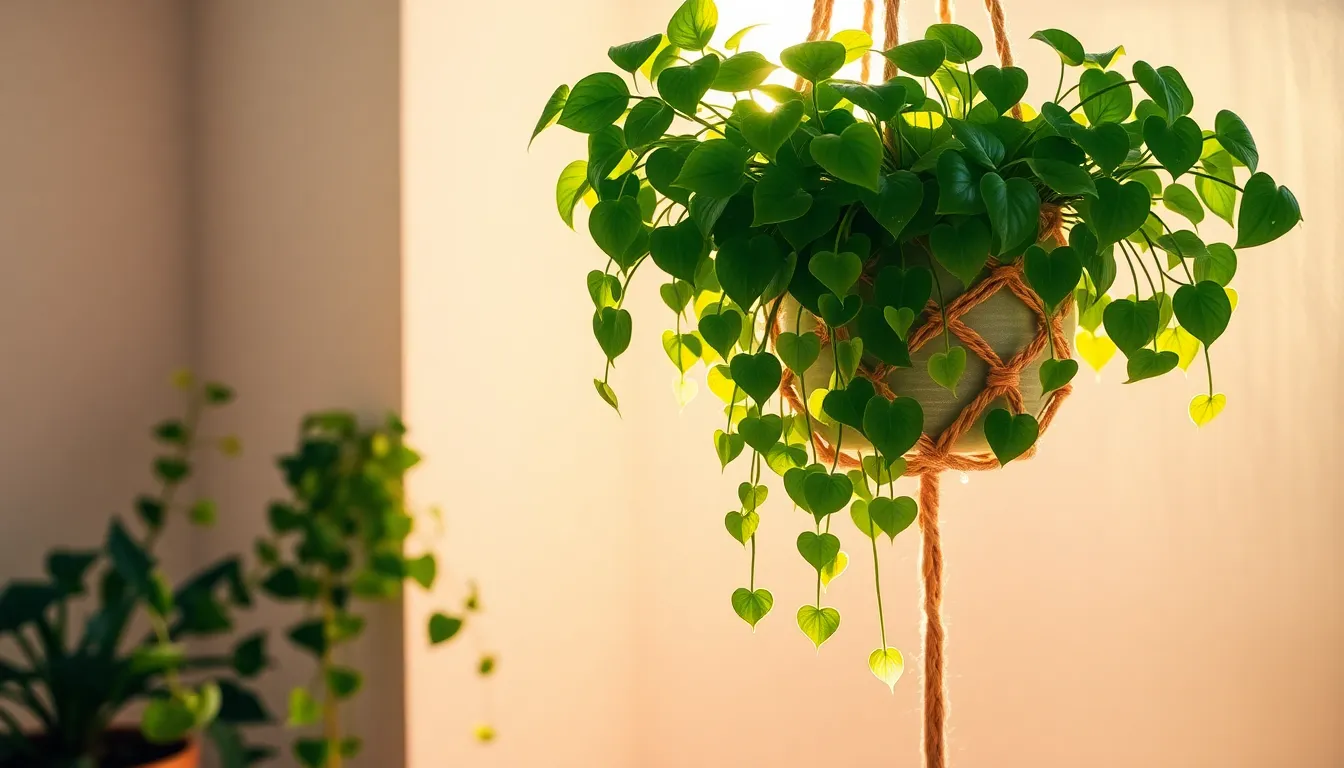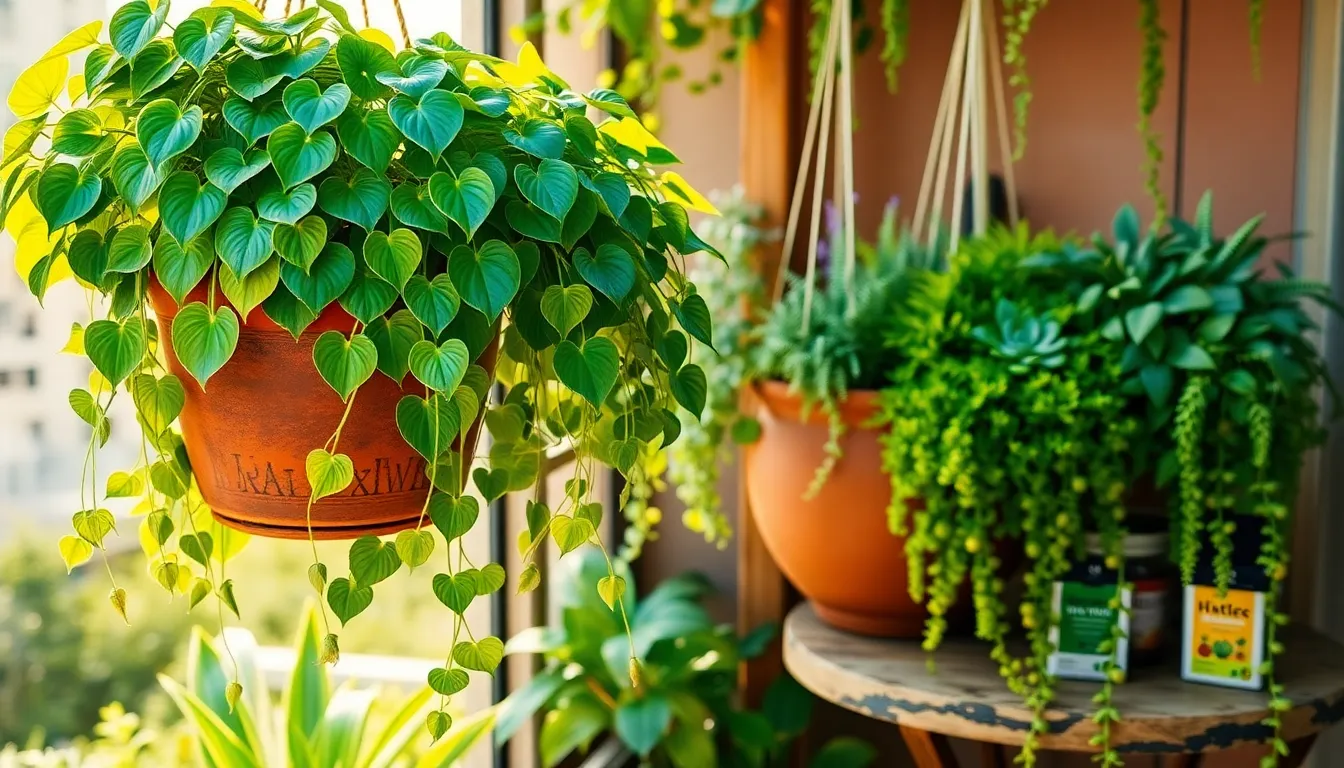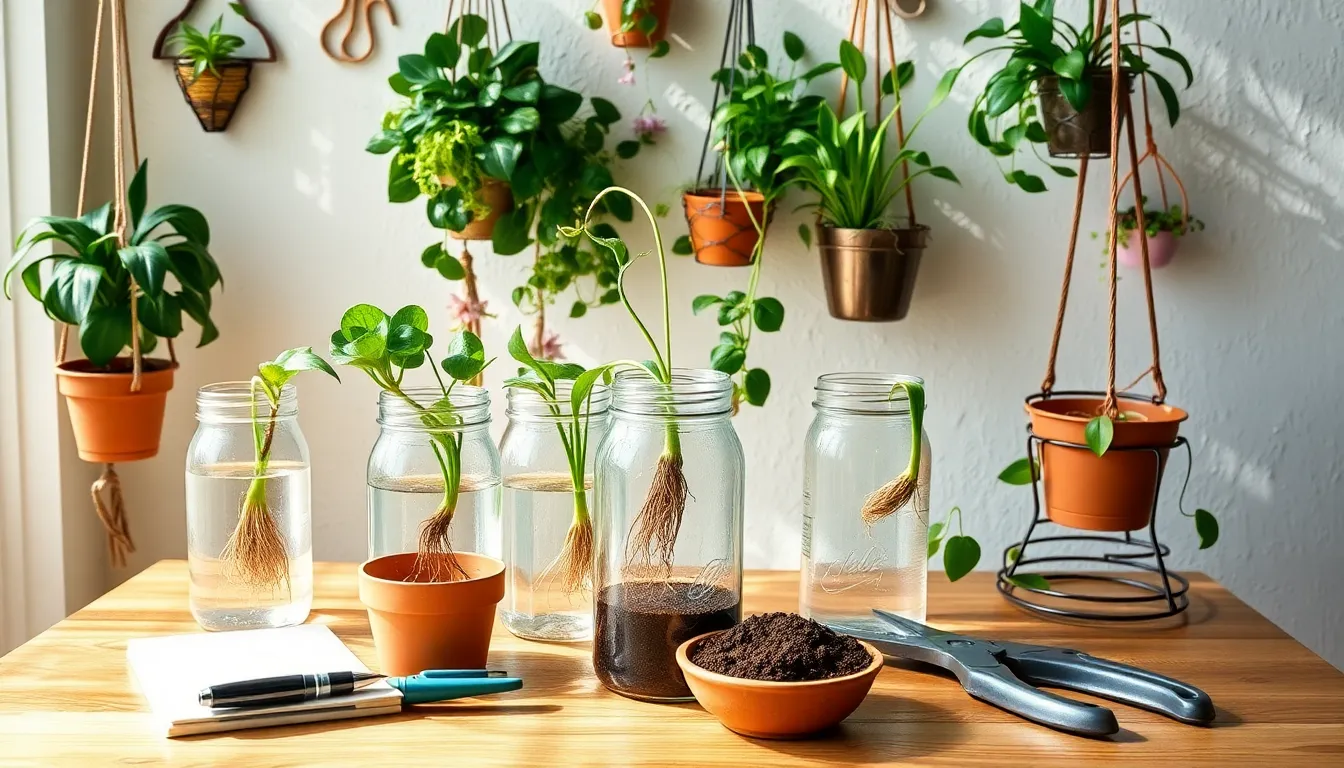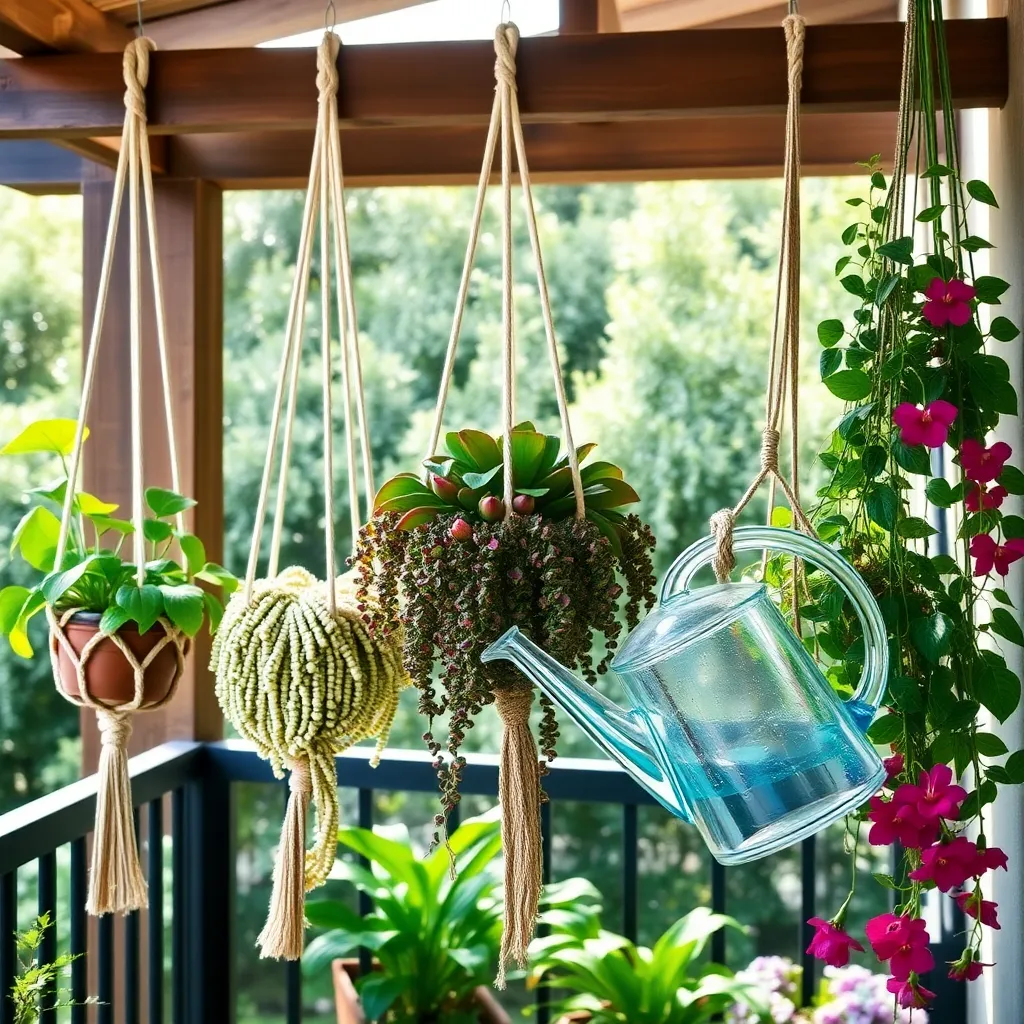Discovering the joys of gardening doesn’t require a sprawling backyard or acres of land. Whether you’re a budding plant enthusiast or a seasoned green thumb, the delight of nurturing greenery can be beautifully realized within the cozy confines of your apartment. “7 Space-Saving Hanging Plants Ideas for Apartments” is your ticket to turning even the smallest of spaces into a lush, vibrant sanctuary. This guide is designed to empower you with practical, innovative ideas that make the most of your space while bringing nature right to your doorstep.
Imagine the satisfaction of watching your plants thrive, adding life and color to your apartment without compromising square footage. By exploring these carefully selected hanging plant ideas, you’ll not only enhance your living space but also enjoy the myriad benefits of indoor gardening, from improved air quality to a soothing, stress-relieving environment. With each idea tailored to fit various light and care conditions, you’ll feel confident in your ability to create and maintain a thriving indoor garden. Let us guide you on a rewarding journey to transform your home into a green haven, no matter the size of your living space.
Choose Compact Trailing Varieties
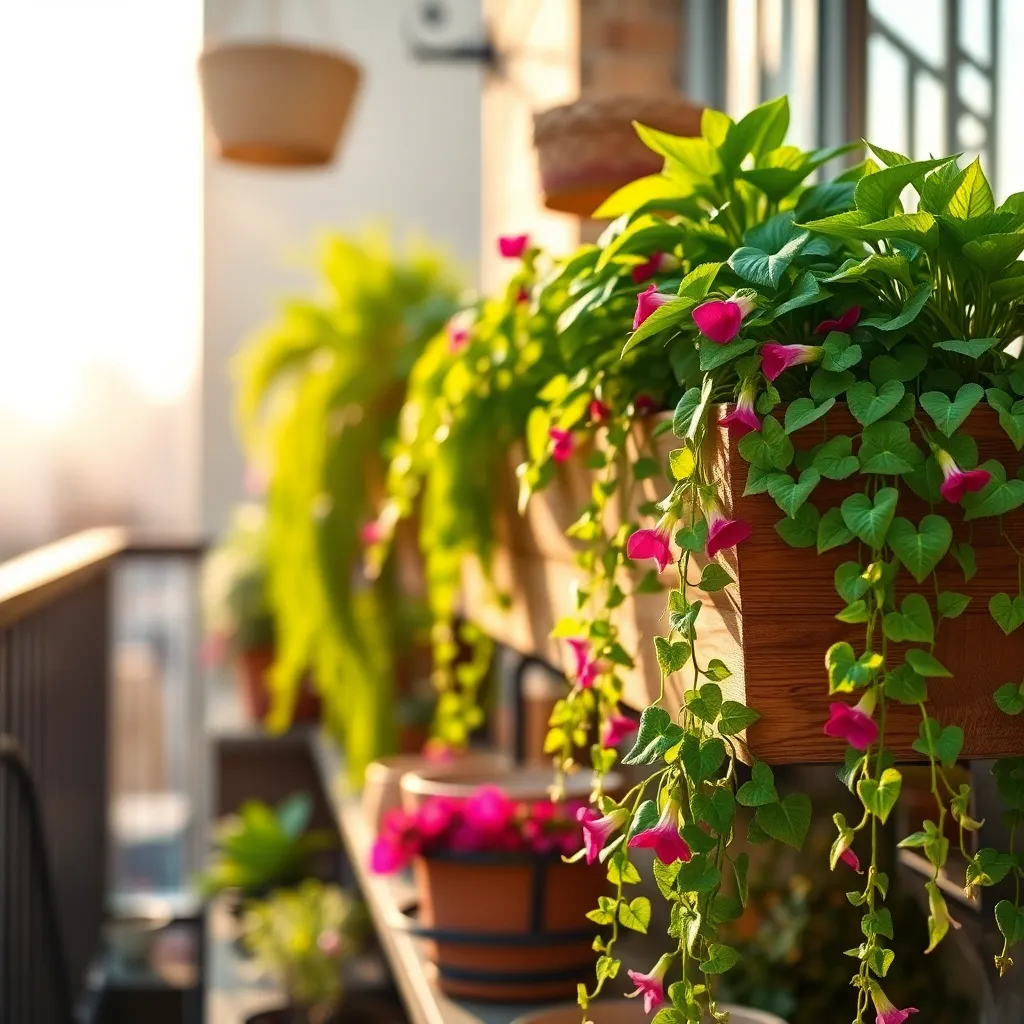
Compact trailing varieties are an excellent choice for apartment dwellers looking to maximize space. These plants not only create a lush, cascading effect but are also easy to manage in small containers, making them ideal for hanging displays.
When selecting compact trailing plants, consider species like trailing jade (Peperomia rotundifolia), which thrive with minimal maintenance. Ensure they are placed in bright, indirect light to promote healthy growth and vibrant foliage.
Use a well-draining potting mix to prevent root rot, which is crucial for these types of plants. Water them sparingly, allowing the soil to dry out between waterings, as overwatering is a common mistake in apartment gardening.
For those looking to add a pop of color, choose varieties such as Calibrachoa or trailing lobelia, which offer stunning blooms. These plants do well with a balanced liquid fertilizer applied every four to six weeks during the growing season to maintain their vibrant appearance.
Install Sturdy Ceiling Hooks

To successfully hang plants from your ceiling, it is crucial to install sturdy ceiling hooks that can support the weight of your chosen plants. Begin by selecting hooks designed for heavy loads, ensuring they are made from durable materials like stainless steel or brass.
When choosing a location for your hooks, consider the light requirements of your plants. Place hooks near windows if your plants need bright, indirect light, but ensure they are not directly exposed to harsh midday sun.
For installation, use a drill to create a pilot hole slightly smaller than your hook’s screw. This prevents the ceiling from cracking and ensures a snug fit for the hook, providing the necessary support for your hanging plants.
After installing the hooks, test their strength by gently pulling on them to ensure they are secure. For added safety, periodically check the hooks for any signs of wear and tighten them if necessary, especially if you notice the plant’s growth has increased its weight.
Utilize Vertical Wall Planters
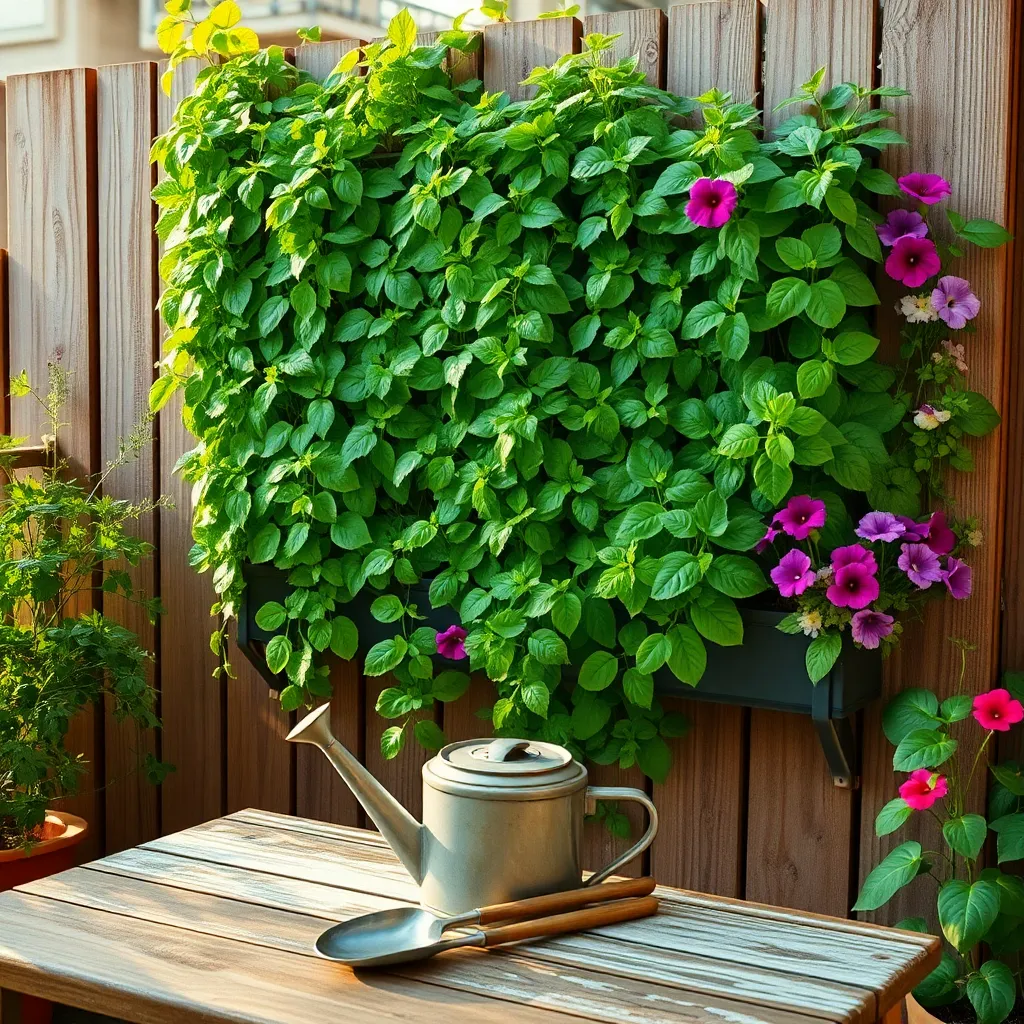
Maximize your apartment’s green space by utilizing vertical wall planters, which are perfect for small areas. These planters allow you to grow a variety of plants without taking up any floor space, making them ideal for urban gardening.
When choosing plants for vertical wall planters, consider species that thrive in limited soil. Herbs like basil, thyme, and mint are excellent choices as they don’t require deep roots and adapt well to vertical arrangements.
Ensure your wall planter receives adequate sunlight, as most plants will need at least six hours a day. Position the planter on a wall that benefits from natural light or use grow lights if your space lacks sufficient direct sunlight.
Proper watering is crucial, especially since vertical planters can dry out more quickly than traditional pots. Opt for a well-draining potting mix and consider incorporating a slow-release fertilizer to support plant growth.
Select Lightweight Containers
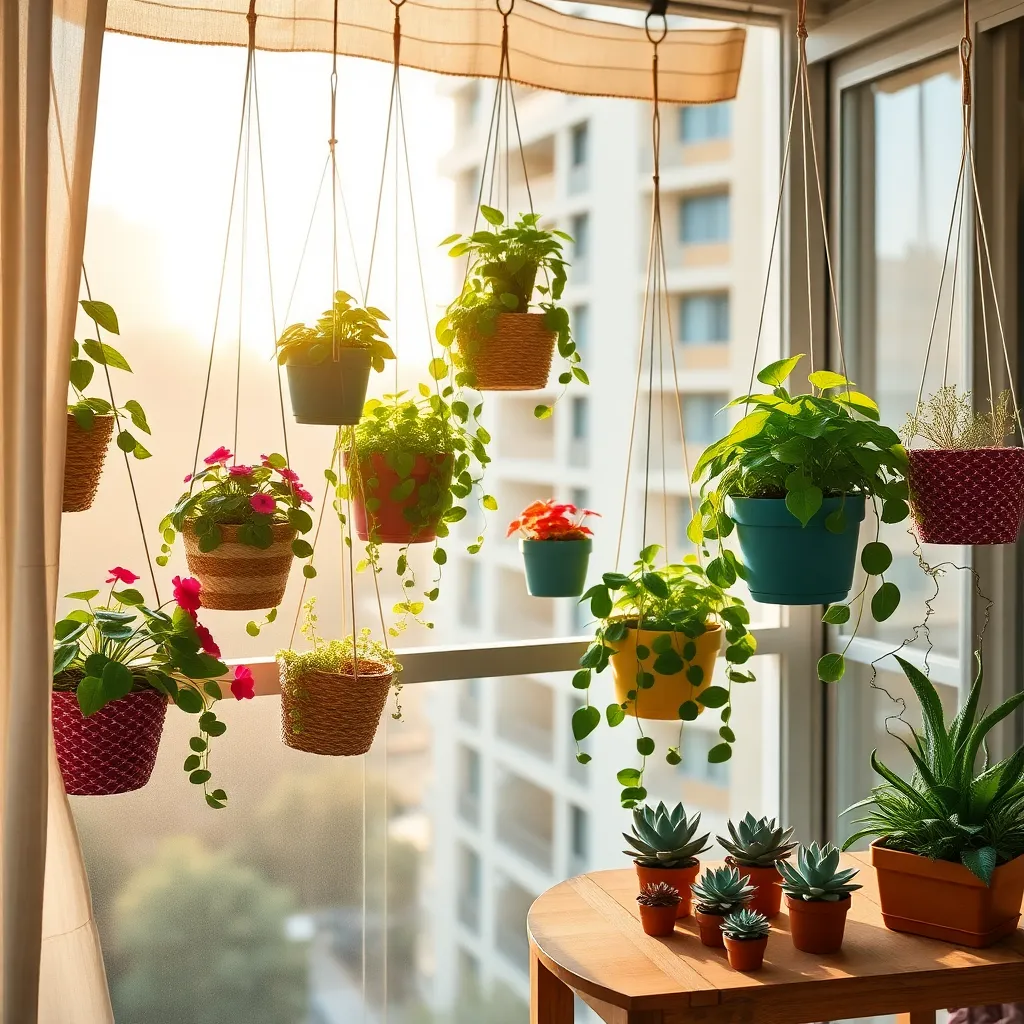
When selecting containers for your hanging plants, prioritize lightweight materials such as plastic, fiberglass, or resin. These materials not only make it easier to hang and move your plants, but they also come in a variety of designs to fit any decor style.
Ensure your containers have proper drainage holes to prevent water from accumulating at the bottom, which can lead to root rot. If drainage is a concern, you can line the bottom with a layer of gravel to enhance water flow and keep your plants healthy.
Consider the size of the container in relation to the plant’s growth habits. A container that’s too small will restrict root growth, while one that’s too large can cause issues with overwatering, as the excess soil retains moisture.
Opt for containers with built-in saucers or use separate saucers to catch excess water and protect your floors from spills. For those living in particularly windy areas, adding a few decorative stones at the bottom can help stabilize the container while maintaining a sleek appearance.
Opt for Low-Light Tolerant Species

Maximizing your apartment’s vertical space with hanging plants is a fantastic way to bring greenery indoors, even in low-light conditions. To succeed with this approach, consider choosing plants that thrive in less sunlight. Low-light tolerant species make excellent choices for spaces that don’t receive abundant natural light.
One popular option for low-light environments is the pothos plant, known for its attractive, trailing vines. Pothos can thrive in indirect light and requires watering only when the top inch of soil feels dry, making it an easy-care plant for beginners. Ensure your container has good drainage to prevent root rot, which can occur if the plant sits in water.
Another excellent choice is the snake plant, which is not only low-light tolerant but also helps purify indoor air. Snake plants are incredibly hardy and prefer soil that dries out completely between waterings, typically about every two to three weeks. Use a well-draining potting mix, like one designed for succulents, to keep your snake plant healthy and thriving.
If you’re looking for something with a bit more visual interest, consider the spider plant. Spider plants are adaptable and can tolerate low to medium light, making them perfect for hanging in a dim corner. Keep their soil slightly moist, but be careful not to overwater; a general rule is to water when the soil feels dry to the touch about an inch deep. Regular misting can help maintain humidity around your spider plant, especially during the dry winter months.
Incorporate Self-Watering Systems
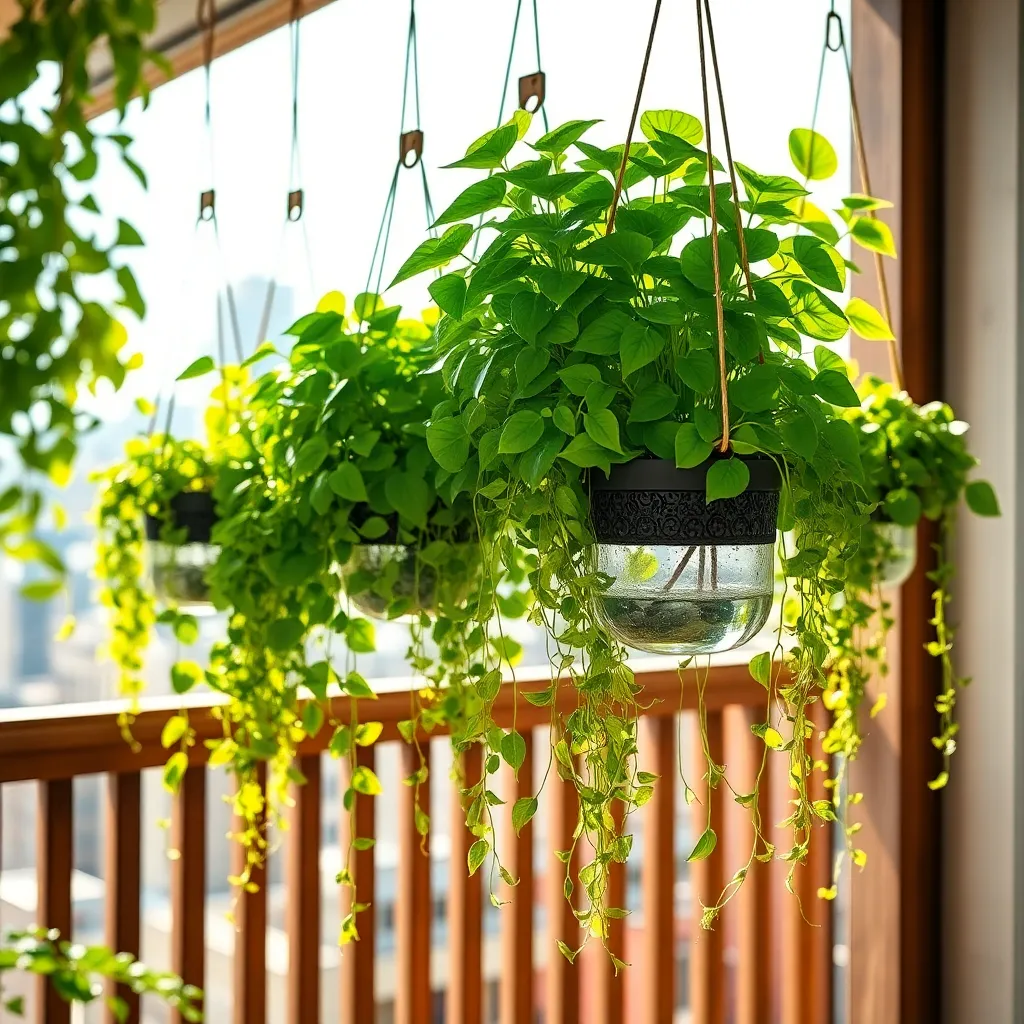
Self-watering systems are an excellent way to ensure your hanging plants receive consistent moisture, especially in apartments where conditions can be unpredictable. These systems can be easily set up with a variety of plants, offering a reliable solution for busy individuals who may forget regular watering.
To start, consider using a self-watering pot that incorporates a water reservoir at the base. This type of container allows plants to draw moisture as needed, reducing the risk of overwatering and promoting healthy root growth.
Choose a soil mix specifically designed for self-watering pots, as it often includes components like perlite or vermiculite that improve water retention. When filling your pot, ensure that the soil is loose and well-aerated to facilitate proper moisture uptake and prevent root rot.
For those interested in a DIY approach, a simple wick system can be created using a cotton rope or string. Thread the wick through the soil and into a water reservoir below, allowing the plant to pull water up as necessary through capillary action.
Advanced gardeners might explore automated self-watering systems that use sensors to regulate moisture levels. These setups offer precise control, ensuring your plants thrive even when you’re away for extended periods.
Rotate Plants for Even Growth

Rotating your hanging plants is essential for ensuring they receive equal exposure to light, promoting uniform growth. Turn your plants every week to prevent them from leaning towards the light source, which can lead to uneven development and a lopsided appearance.
For those new to gardening, it’s important to understand that different plants have varying light requirements. If your plants are positioned near a window, consider rotating them 90 degrees each time to ensure all sides get the necessary light exposure, especially for light-loving species like succulents and ferns.
Experienced gardeners might consider the plant’s natural growth cycle when rotating. During active growth phases, such as spring and summer, increasing the frequency of rotation can help maximize photosynthesis and overall health.
Remember to also adjust your watering schedule when you rotate your plants, as different sides might be exposed to more or less light, affecting soil moisture levels. Check the soil moisture with a finger test each time you rotate to maintain optimal hydration.
Conclusion: Growing Success with These Plants
In this article, we’ve explored seven innovative ways to incorporate hanging plants into your apartment to not only save space but also nurture your relationship with your living environment. We began with the classic charm of macramé plant hangers, then moved to the modern twist of wall-mounted planters. We delved into the practicality of ceiling-mounted greenery, the elegance of hanging shelves, and the resourcefulness of using window gardens. We also covered the vertical garden trend and the whimsical touch of terrariums. Each idea is a step towards creating a harmonious living space that fosters tranquility and connection.
To put these ideas into action, start by selecting one concept that resonates with you and commit to bringing it to life this weekend. Whether it’s a single hanging plant or a complete vertical garden, taking that first step can transform your space and your relationship with it.
Remember, every small change is a step toward a more fulfilling, connected life. Bookmark this article for future reference, ensuring you have these ideas at your fingertips as you continue to cultivate a nurturing environment. Embrace these suggestions, and watch as your relationship with your home blossoms into a lasting success story.

